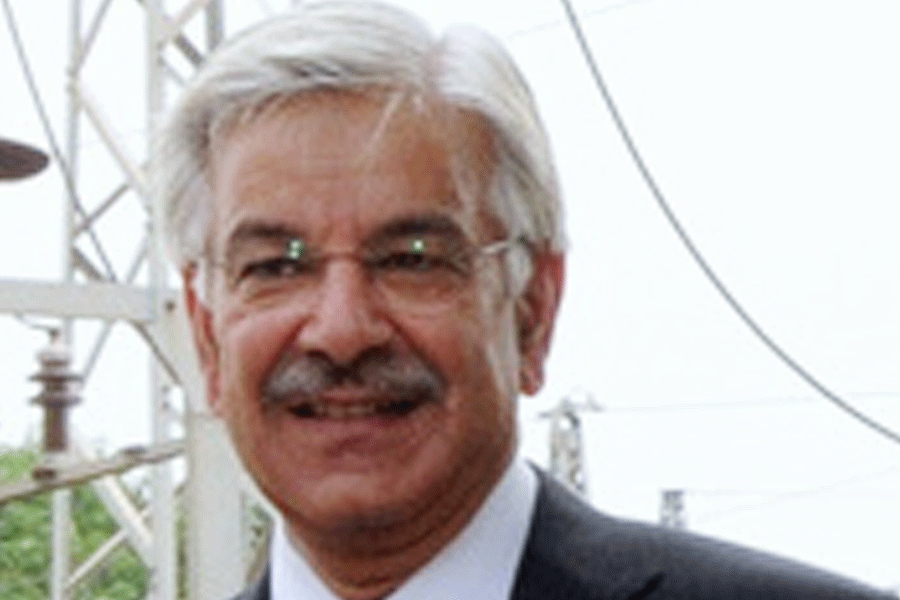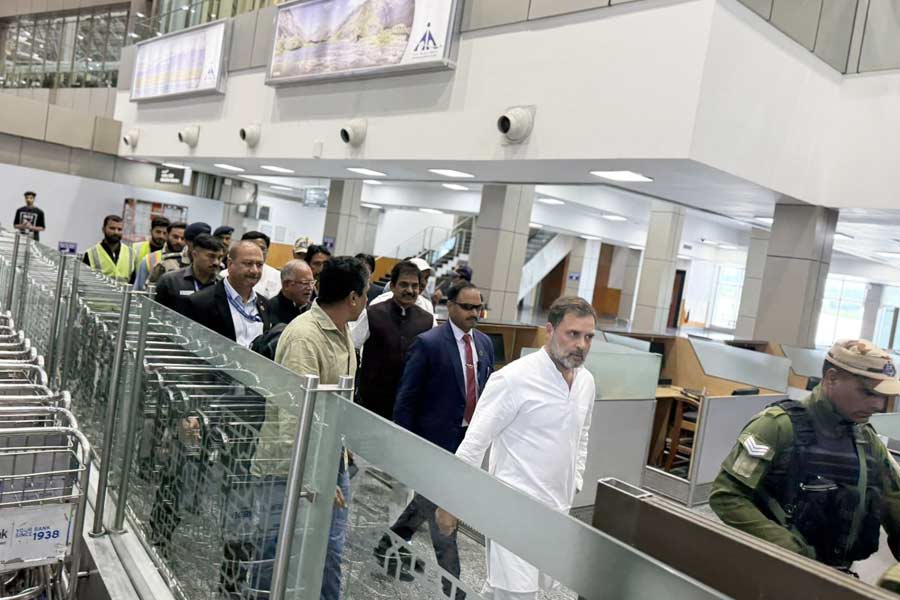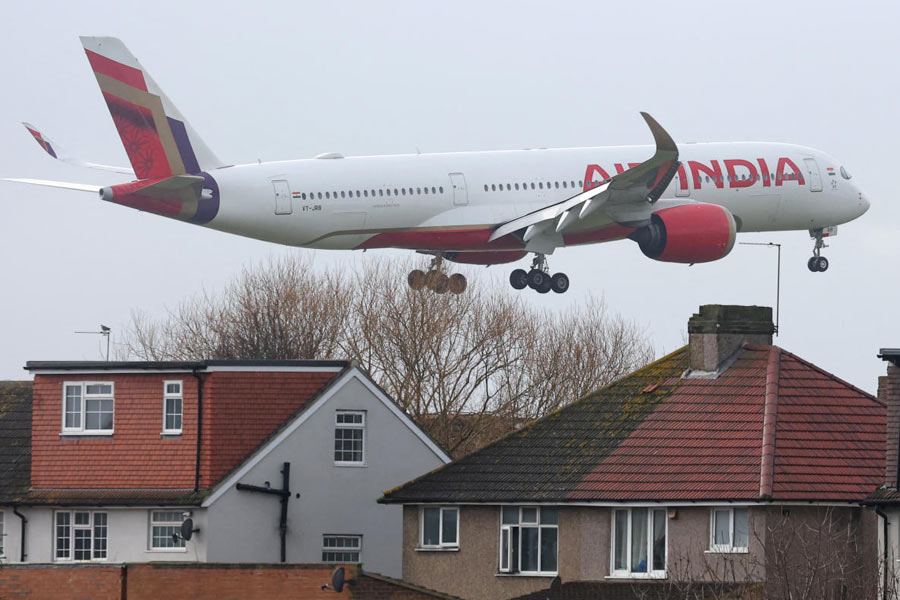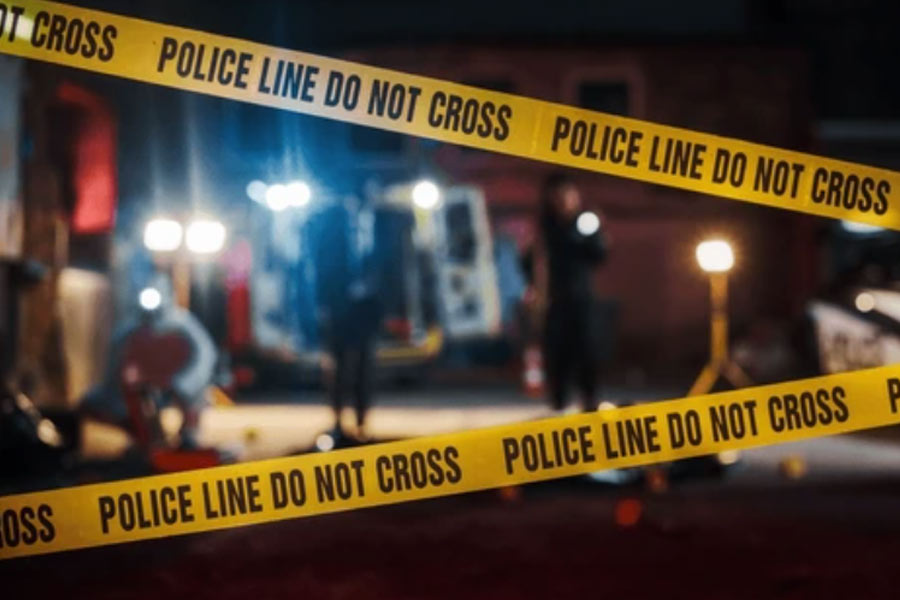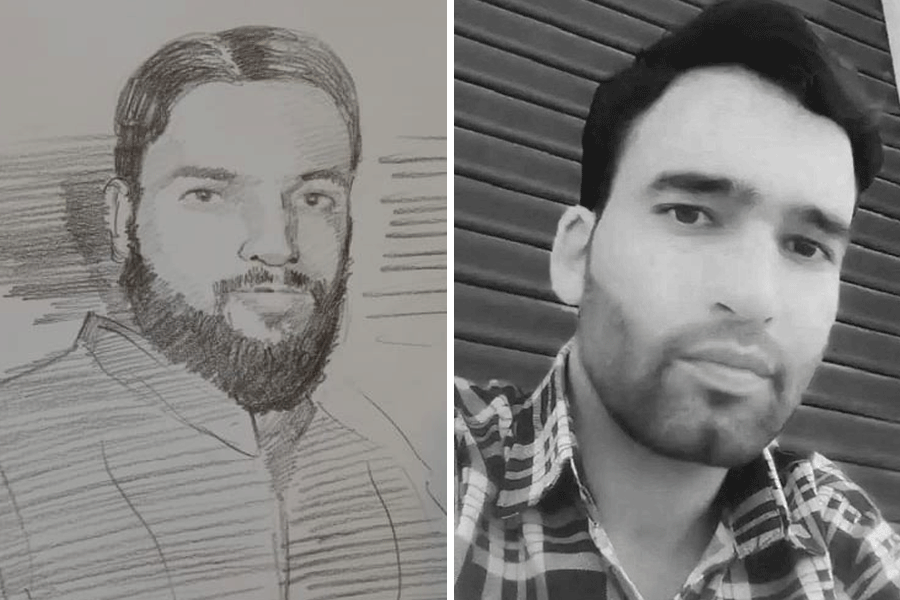 |
And truly the Grand Trunk Road is a wonderful spectacle
Such a river of life as nowhere exists in the world
— Rudyard Kipling in Kim
Shah Rah-e-Azam or Sadak-e-Azam or Badshahi Sadak. This 2,500km “river of life” from Chittagong to Kabul twining through India’s broad bosom has worn many names after Sher Shah Suri reconstructed the Mauryan artery in the 16th century. The British built on it and gave it its modern identity: Grand Trunk Road.
Cut to the 21st century. Kipling’s metaphor endures in an abbreviated form: GT Road. A minuscule portion, about 14km, runs through Howrah before steering away to Burdwan and beyond.
The stretch in Howrah has been relegated to a state highway — a congested rat run riddled with bone-breaking potholes until a couple of months ago. The state PWD repaired it after nearly two years of protests by residents, including cricketer Laxmi Ratan Shukla.
Metro drove through the repaired stretch of the grand old road.
SOUTHSIDE
The starting point was Bataitala, a port town on the banks of the Saraswati that was once a hub of trade and commerce.
The road follows the one-way traffic rule in Howrah, barring the 500-odd metres between Kazipara and Bataitala. Not more than 14ft wide, it snakes through a maze of shops, residential houses and markets. The road is freshly tarred and white borders run on both sides.
Oddly, there are no footpaths or sidewalks on GT Road, or for that matter on any road in Howrah.
Open drains run alongside the road, right at the edge where the asphalt ends on either side. Shopkeepers had put concrete slabs on the drain in front of their shops, lest someone fall in the sewer. Trader Ritesh Mathuria said: “GT Road is already narrow and its size shrinks further because of the garbage in the open drains. It’s a health hazard as well as an accident risk.”
Jagat Banerjee Ghat Road falls on the right, a little drive up towards the north along GT Road. The white and red facade of Avani Riverside Mall on Jagat Banerjee Ghat Road gleams amid the mishmash of monotone. Ritika Agarwal, a regular at Howrah’s star attraction, gushed: “The mall is the most happening place here. Who would have thought stars from Bollywood would come to Howrah? From Bipasha Basu to Soha Ali Khan, everybody has been here.”
Further down is the Shibpur Police Line — lined with offices, officers’ quarters, barracks and hospital.
The drive was OK (on a scale of smooth, okay and bad) despite rickshaws, pickups and buses almost brushing the sides and bumpers until Shibpur Tram Depot. Not trams, but empty buses — 55A and Shibpur-Dharmatala — lined the stretch, waiting for passengers and reducing the road width to 8ft. Rickshaws and tuktuks, the newest addition to Howrah’s transport inventory, were caught in a never-ending squeeze of vehicles. “This bus stand should be removed,” thundered Samir Sikdar, waiting for a bus to Belur.
A hundred clutch-brake-gear shifts later, the speedometer touched 40kmph as the car whirred through Ganges Garden — a posh housing estate shining in a fresh coat of paint. A broken signboard of Bhai Bhai Hotel juts out just beside a spanking new eye clinic.
The old and the new are in constant battle in Shibpur.
Further down, the ruins of Aloka Cinema bring back memories of Uttam-Suchitra blockbusters — most of which premiered for Shibpur cinegoers at this theatre.
To the left is Baje Shibpur, a corrupt of Bajiye Shibpur that was home to a number of musicians.
On the right is Chawrabasti, a slum where one of the GT Road rickshawpullers Mohammed Alamgir lives with his wife and three daughters. “Police don’t allow us on the road from 8am to noon and again from 4pm. How much can we earn in four hours from noon to 4pm?” he asked an existential question of every rickshawpuller in the area. A signpost at Sandhya Bazar declares the 8am-8pm one-way rule that entails a fine of Rs 2,000.
Fazir Bazar, a link to Foreshore Road, comes next on the right. CPM and Trinamul flags flutter cheek and jowl. Showrooms of Hero scooters and Laha cycles stand side by side. So does a huge garbage dump in front.
Mullick Phatak looms ahead from there, with PK Banerjee Road veering off to the right and Netaji Subhash Road to the left. The Howrah jail and the morgue are on PK Banerjee Road — the house of the dead cutting a ghastly figure in a thickly populated residential neighbourhood.
MIDWAY
A deep breath off Mullick Phatak lies Howrah Maidan, a sprawling median when south Howrah ends and central and north begin.
The town square used to be a jungle until the 1980s and some people “sat and played their drums here… it was eerie”, recalled Amit Ghosh, Metro’s Howrah companion on the journey through GT Road.
When culture centre Sarat Sadan came up in 1994, the area changed. The Maidan is actually a “gap” on GT Road since no vehicle is allowed through this space. Cars are routed through Nityadhan Mukherjee Road on the right or Chintamoni De Road on the left.
Mayhem is an understatement here: pedestrians hopscotch through narrow passages because barricades for the East West Metro project have shrunk most of the road space and whatever little was left has been taken over by hawkers peddling underwear to Benarasi. Jeet Sarkar, 24, sells lycra and cotton leggings. “We have been doing business here for the past 35 years.”
At the junction of GT Road and Nityadhan Mukherjee Road stands an old relic — Bangabasi Cinema, unrecognisable now after it was turned into a supermarket.
Chinmay Ghosh, 62, was standing at the junction for a bus. “This is a no-man’s-land. Metro construction has stopped midway, the traffic system has gone haywire… total lawlessness.”
NORTHSIDE
At the other end of the Maidan via Nityadhan Mukherjee Road, the car hits GT Road again on Bangal Babur Bridge. On the left begins the boundary wall of Bridge & Roof Company, one of the largest factories in Howrah.
This was the most treacherous stretch up to Bally Khal until cricketer Shukla, a resident of Liluah, joined forces with the residents demanding immediate repairs. The PWD took two years to wake up.
“The road resembled a corpse stripped off its flesh, at least at 12 to 13 spots. Like bones in a skeleton, bricks jutted out from beneath. A cloud of dust hung perpetually over this tar-less road, a sneeze could trigger a snarl,” a resident said.
Shukla said he was happy that the PWD repaired the road early this year. “There was a huge pothole right in front of my house where a number of accidents occurred. People were forced to block the road and I too joined in. Now that the road has been repaired, travelling has become much more convenient,” he said. The ride was smooth indeed until Pilkhana, one of Asia’s largest slums and the setting for Dominique Lappierre’s City of Joy.
This stretch of GT Road in Salkia has suffered untrammelled encroachment. Makeshift shops, double-row autorickshaw stands, designated bus bays barricaded with dividers and illegal parking reduce road space to half its original size.
A little nudge to the accelerator from Salkia Chowrasta brings up the factory zone of Liluah. Naskarpara Road veers off to the left while Howrah Road and JN Mukherjee Road to the right. Most buses on GT Road take a detour through Howrah Road.
Sankar Sanyal, Liluah resident and chairman of the Howrah Chamber of Commerce and Industry, said: “Since the industrial belt is along GT Road, lorries take this road to transport goods. Good that the road was repaired... business was suffering.”
Further north stands Howrah’s lone multiplex, Inox Liluah — basking in the April sun unlike the nostalgia-riddled Parijat Cinema concealed under political festoon a couple of miles away. “It beats going to Calcutta every time we want to catch a movie in a multiplex,” giggled Nusrat Khan with her college friends out to catch a matinee show.
Belur Bazar, with Tiffin Bazar to the left, appears next. Scrap iron dealer Rakhal Das, a murder accused acquitted of the charge, lives here. “He has four houses for his four wives,” recounted Ghosh.
Up next is Belur Math to the right with its pink structure standing tall amid a landscape of either sick or closed factories. Keeping Lal Baba College to the right and Belur Station Road to the left, GT Road pushes through a fleet of factories and a flitting of shanties to enter its last leg in Howrah.
Bally Deshbandhu Club, Bally Rabindra Bhavan, Santiram Vidyalaya and the Bally municipality office flit across one after the other. Bally Khal marks the end of Howrah with the two Bally bridges running overhead side by side.
GT Road meanders through, this time with wide sidewalks on either side.


